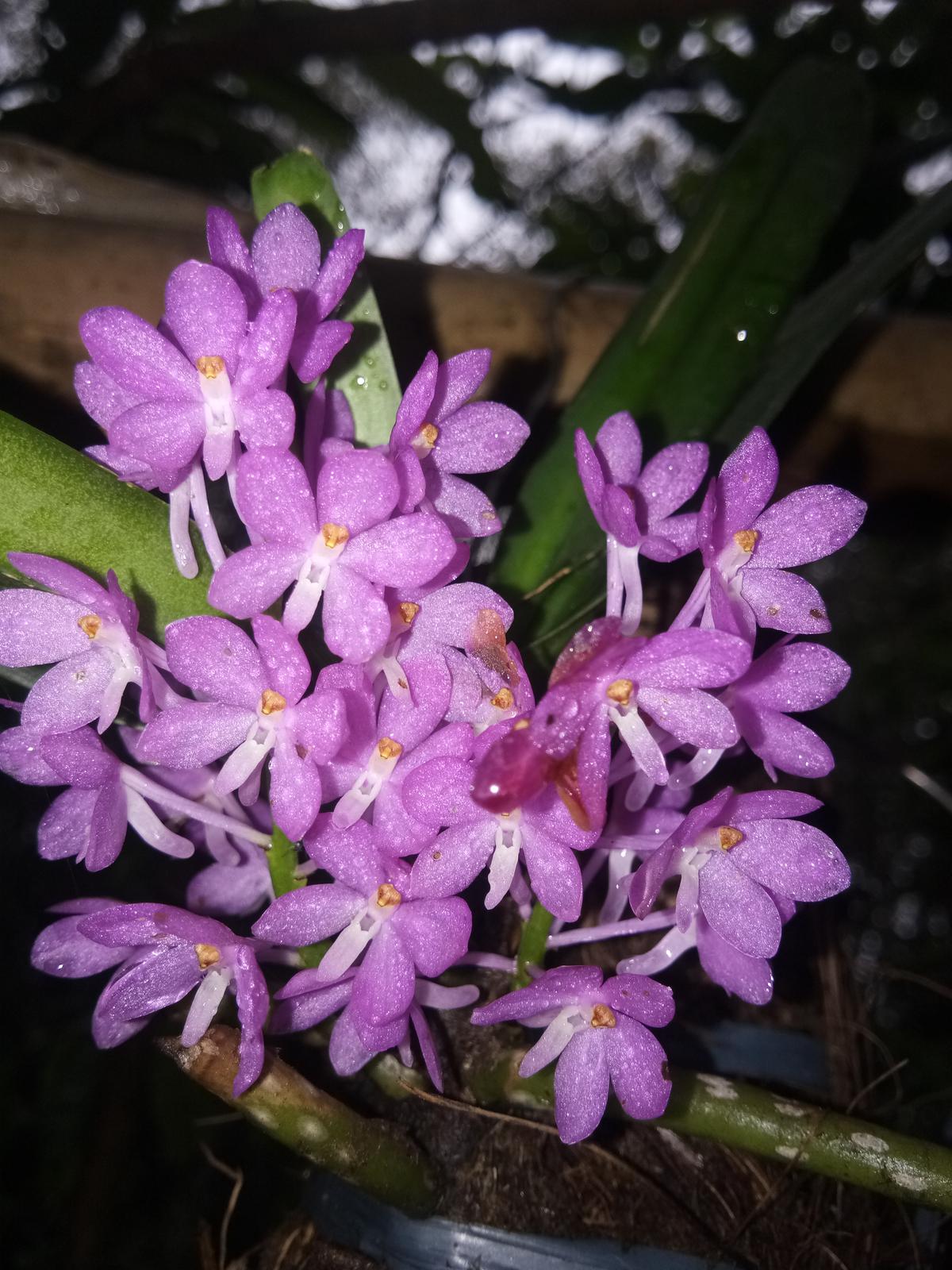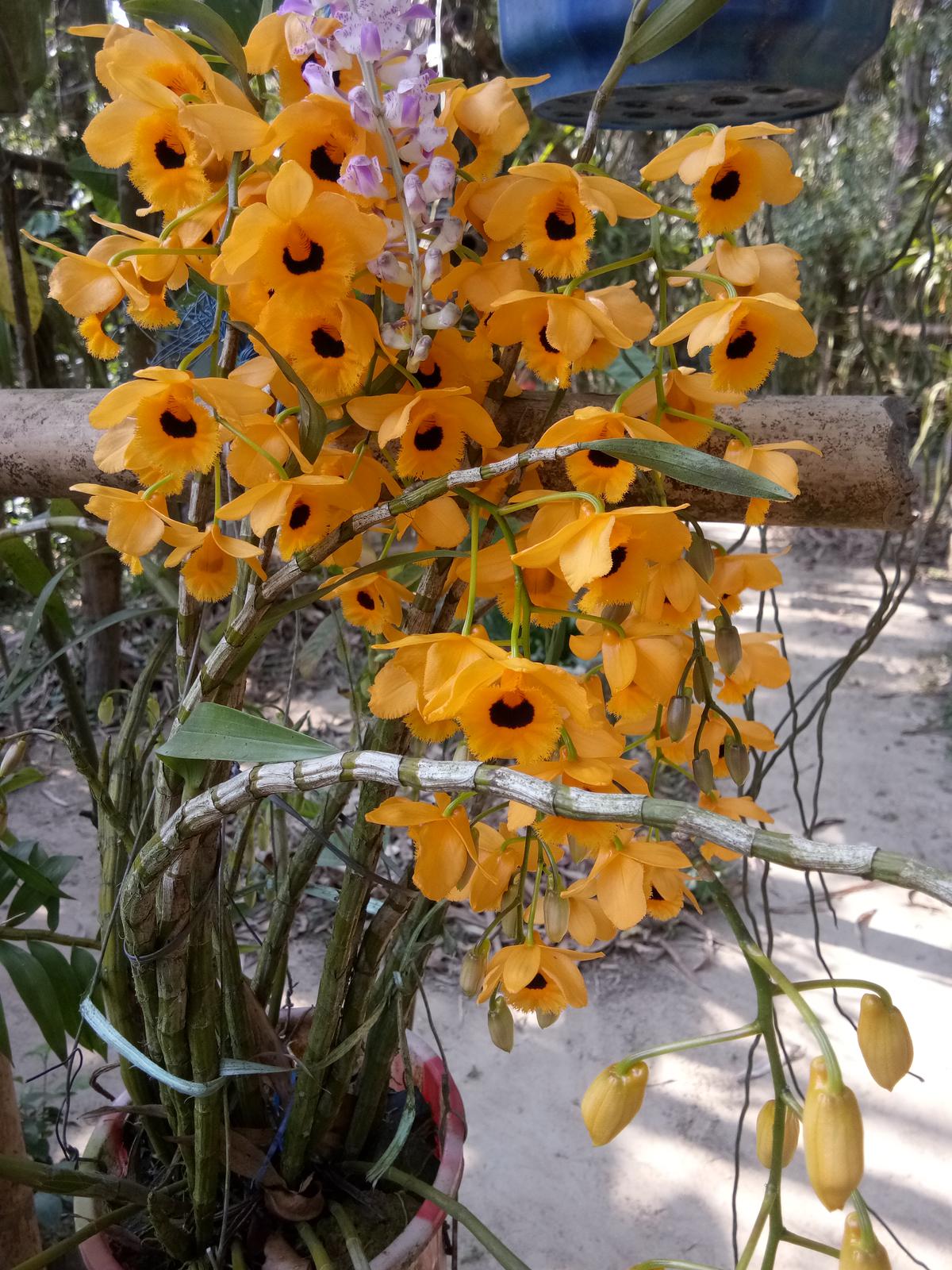[ad_1]
After years of rescuing wild orchids from fires, deforestation and construction, Mithu Gogoi has a garden where 9,000 burst into bloom every spring
After years of rescuing wild orchids from fires, deforestation and construction, Mithu Gogoi has a garden where 9,000 burst into bloom every spring
In spring, Mithu Gogoi from Titabor in Jorhat, Assam, has about 40 visitors at home every day. During the Bihu season last month, there were days when he and his wife, Bonti Gogoi, hosted up to 400 a day.
These visitors are not his friends or relatives. They are strangers — tourists and students — who want to see his personal orchid collection. Spread over less than one acre, this garden, which is set in his family home, blooms with a staggering 9,000 orchid plants, and is open to all at no cost. In April, when they are in full bloom, the space is especially pretty: you may have seen it captured on camera by enamoured Instagrammers by now.
“Most of them are rescued from forest fires due to jhum cultivation or from trees that were axed for road widening,” says Mithu, adding “The forests of upper Assam have beautiful wild orchids that are fast disappearing due to deforestation. Around 90% of Assam’s orchids have disappeared. I wanted to save them for future generations; otherwise, they will only see them in photos.”

Legal blooms
As a farmer, Mithu takes pride in being able to grow this breed aplenty in his home garden. Orchids usually grow wild and it is illegal to grow some varieties at home, as per the Biodiversity Act, 2002, because they are categorised as an endangered species. Hence, Mithu has ensured that his collection consists of only legal blooms.
His personal collection – which bursts with shades of yellow, pink, purple, white and orange – includes a number of Foxtail orchids or Kopou phool, (Rhynchostlis retusa) the State flower of Assam. Mithu also has orchid breeds like rhynchostlis retusa white, Dendrobium lituiflorum yellow, V anda ampullacea, to name a few.

Collecting, nurturing
Mithu grows orchids in flower pots, tree barks and on A-grade wood (a soft variety that does not rot and is resistant to termites). Orchids need a moist climate for the roots to grow. Caring for them is like nurturing a child he says; one has to devote close to two hours every day watering, pruning and checking the condition and growth of roots.
Now a renowned orchid conservationist, Mithu’s tryst with the flowers began when his family’s land was cleared for a tea plantation in 2007. As the trees were felled, Mithu carefully collected the orchids and brought them home, setting up an environment they could thrive in.


“I became obsessed with them,” he says. “When I travelled around the Northeast, I also started to learn about orchids. I am part of the Orchid Protection Society in Jorhat, a 47-member society.” So far, the society has been able to rescue more than 100 plants by networking with orchids research centres from different states of Northeast, he says, adding “We rescue roadside plants, put some back in their natural habitat and plant some at home so that the breed — no matter how common — survives.”
[ad_2]
Source link


